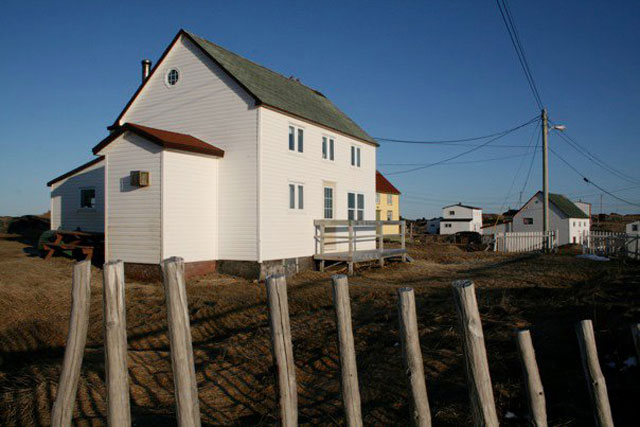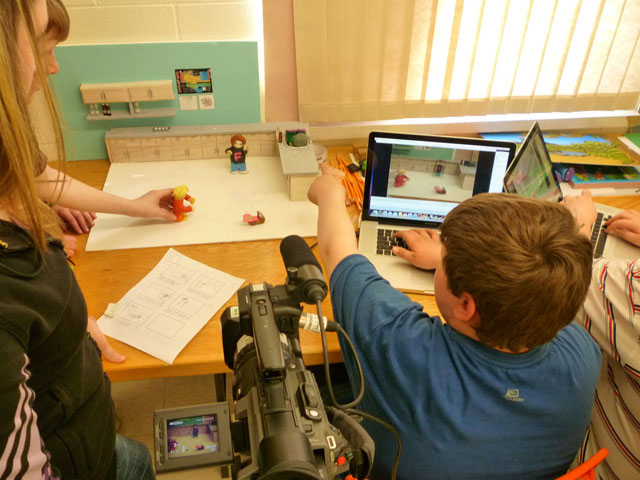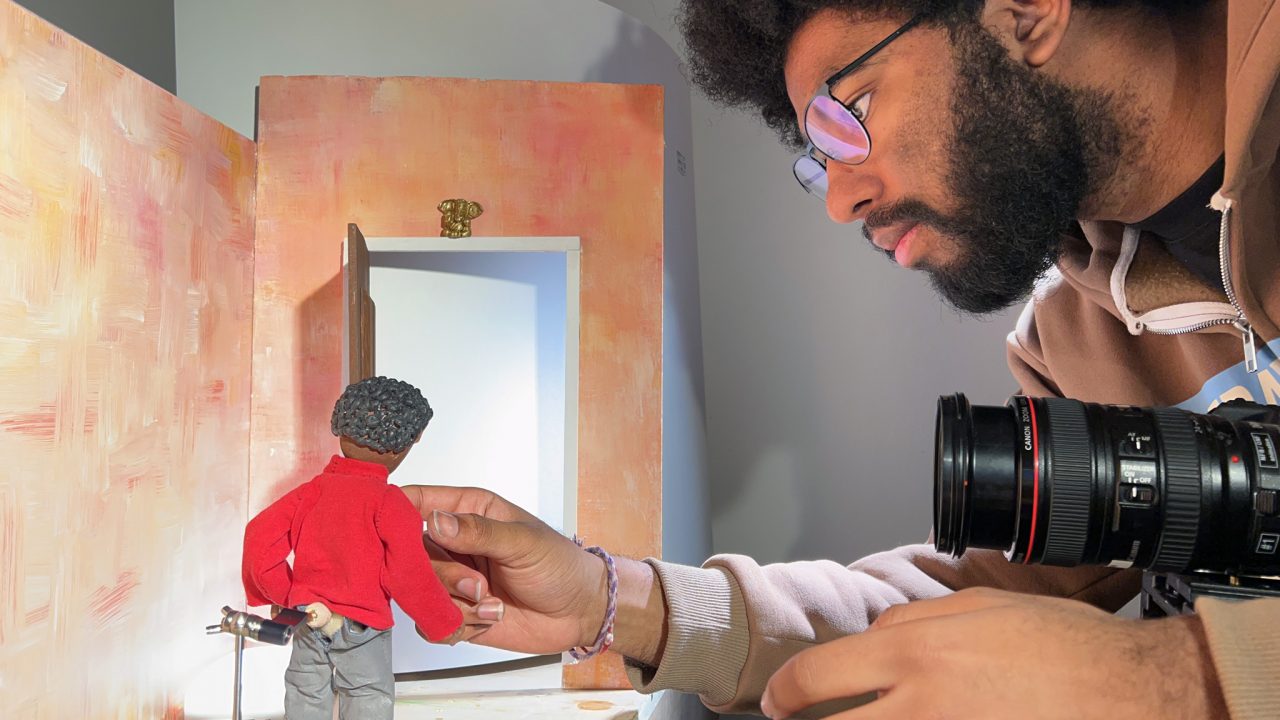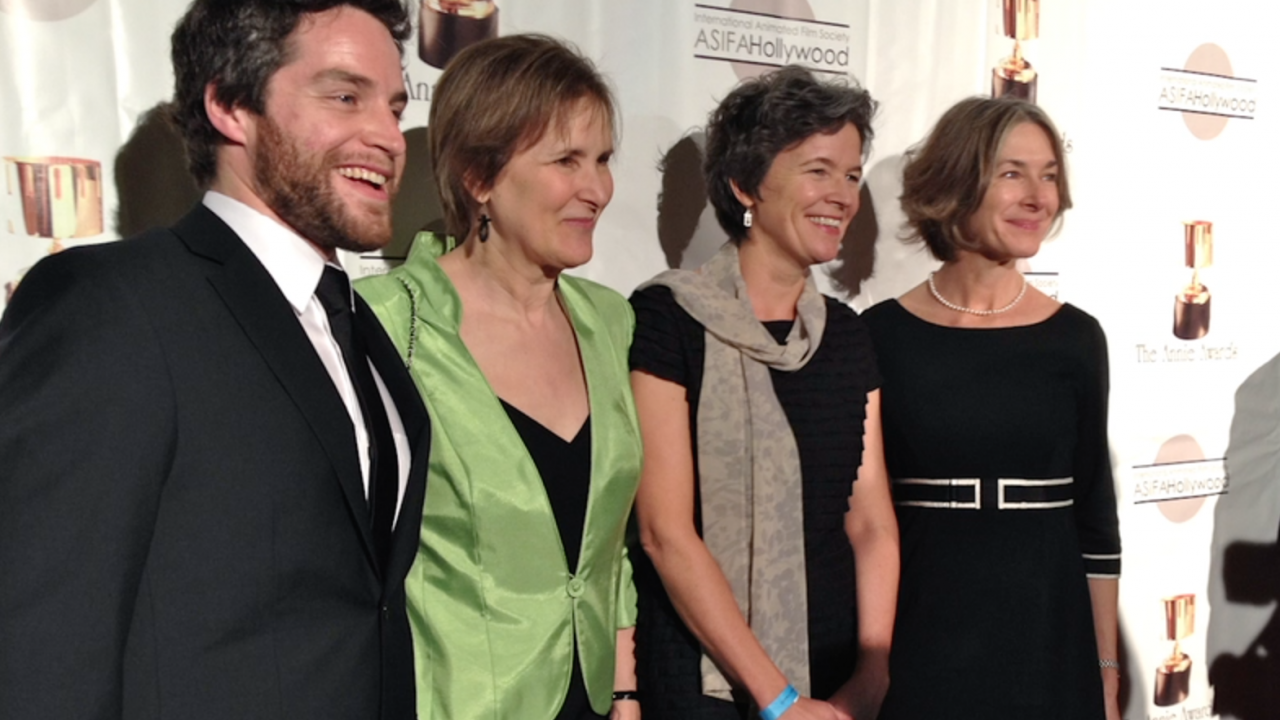
Fogo Island Adventure!
Fogo Island Adventure!
It was with much excitement and curiosity that fellow workshop facilitator Gilles Roy and I left Toronto and Montreal, respectively, embarking on a journey of two flights, one car trip and one ferry ride before finally arriving on Fogo Island, Newfoundland. We had been asked to teach animation and documentary workshops to three different high school classes as part of an ongoing effort to engage the people of Fogo Island with media production and community arts programming.
To ensure that students would have the best learning experience possible with the technology available, seven shipments of professional equipment were assembled and sent to Fogo Island from Halifax, Montreal and Toronto. Background sets, craft supplies and boxes of clay were also shipped in; Gilles and I unpacked it all upon arrival and quickly got to work organizing and labeling the material.
Everyone we met was friendly, supportive, and good spirited—and the students were unbelievably fun to teach! The animation workshops consisted of flipbook creation, pixillation (animation of the human body) and claymation. After observing the first day’s fun and educational activities, the high school science teacher enthusiastically suggested that her students recreate the human circulatory system using clay and animation.
The documentary workshop was also extremely productive and insightful, with four documentaries planned, shot and edited entirely by the students in two short days. Topics included: the amalgamation of the previously independent town councils, the centralization of medical care for the residents of Fogo Island, a profile of local business owner Ross Osmond and a look at the local Credit Union through two very informative employees. After sitting in on the first half of the workshop, the English teacher announced to her class that their final documentary would be considered for course credit, acknowledging the relevance of documentary filmmaking and storytelling to high school educational and curriculum goals. This certainly got the students smiling!
Though the entire trip was undeniably successful, the real highlight for me was the opportunity to present two screenings of the finished films to the students and public on the final day. The first show, for students as well as staff that had participated, took place in the high school, while the second was held for parents and the public at the new Fogo Island Film House. The e-cinema boasted a packed, standing-room-only event with many of the student filmmakers also in attendance, making for an amazing Q&A, with Gilles and I serving as moderators. Several parents and relatives expressed sincere gratitude to us for making the time to come and teach their children. One parent described how his father had participated in Colin Low’s 1967 NFB Challenge for Change project, and how remarkable it was that his daughter was now able to continue the filmmaking experience with the NFB, more than forty years later.
The NFB outreach project on Fogo Island offered an incredible opportunity for Gilles and I to not only reach almost 60 children living in a remote part of Canada, in a short amount of time, but also for us to learn about a beautiful and evolving community. We both look forward to returning and facilitating another event, to the mutual benefit of all involved. Thank you to everyone on Fogo Island for your hospitality, charming sense of humour, and enthusiasm about both the filmmaking process and the National Film Board! Until next time . . .
This initiative was made possible through the partnership between the Shorefast Foundation and the National Film Board of Canada




